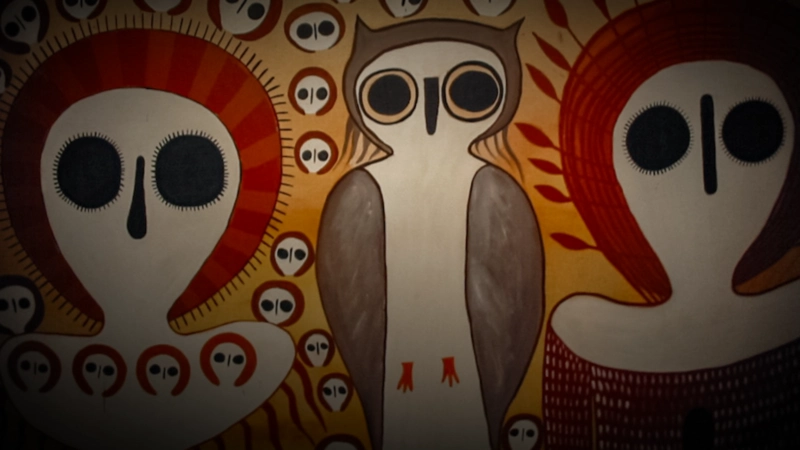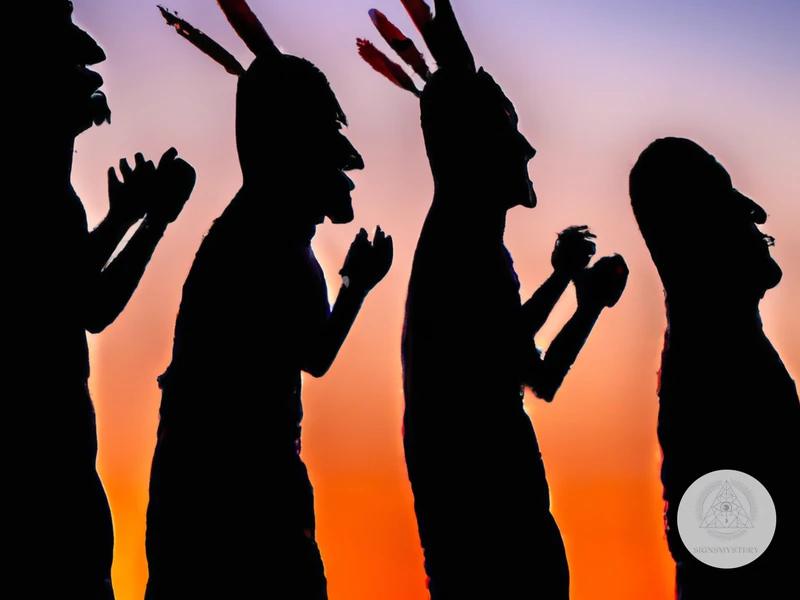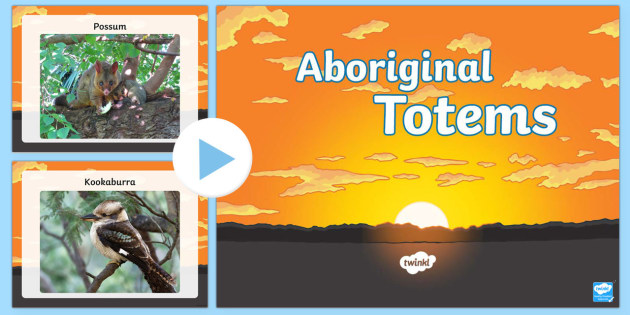From Totem to Tradition: Exploring the Animal Kingdom in Aboriginal Culture
From Totem to Tradition: Exploring the Animal Kingdom in Aboriginal Culture

The rich and diverse tapestry of Aboriginal culture is intricately woven with the threads of nature. Animals, in particular, hold a profound significance, transcending mere biological existence and embodying deep spiritual, cultural, and social connections. These connections, passed down through generations, are reflected in everything from art and storytelling to ceremonies and social structures.
This article delves into the fascinating world of Aboriginal animal symbolism, exploring some of the most commonly used animals and their multifaceted roles within different Aboriginal cultures across Australia.
Related Articles: From Totem to Tradition: Exploring the Animal Kingdom in Aboriginal Culture
- A Journey Through Time: Unraveling The Secrets Of Chinese Aboriginal Totem Poles
- The Kangaroo’s Leap: A Dreamtime Story Of Creation And Resilience
- Unveiling The Beauty And Significance Of Aboriginal Female Names
- Unveiling The Power And Beauty: A Journey Into Aboriginal Face Masks Of Australia
- Beyond Bush Tucker: Exploring The Rich Tapestry Of Aboriginal Food Culture
The Significance of Animal Symbolism:
Aboriginal cultures believe that the spirit world is interconnected with the physical world, and animals are seen as powerful intermediaries. They are not just creatures to be observed and hunted but are considered spirit beings, ancestors, and custodians of the land. Each animal possesses unique characteristics, behaviours, and stories that resonate with different aspects of Aboriginal life, providing valuable lessons and guiding principles.
1. The Powerful and Protective: The Dingo
The dingo, a wild dog native to Australia, holds a complex and often misunderstood position in Aboriginal culture. While sometimes feared for its predatory nature, the dingo is also revered for its strength, intelligence, and loyalty. It embodies resilience and adaptability, representing the ability to survive in harsh environments.
In some cultures, the dingo is associated with the spirit world, acting as a guardian of sacred sites and a protector of the land. The dingo’s howl is often interpreted as a warning or a message from the spirit world, reminding people of their connection to the ancestral realm.
2. The Wise and Ancient: The Emu
The emu, Australia’s largest bird, is a symbol of strength, perseverance, and wisdom. Its powerful legs and ability to travel long distances represent the journey of life and the importance of endurance. The emu’s feathers are often used in ceremonial headdresses and body paint, signifying connection to the land and its ancestral spirits.
In some Aboriginal cultures, the emu is associated with creation stories, playing a role in the formation of the land and the birth of the first people. Its eggs are considered sacred and are often used in ceremonies and rituals.

3. The Agile and Adaptable: The Kangaroo
The kangaroo, an iconic Australian animal, is revered for its agility, speed, and ability to thrive in diverse environments. It represents strength, resilience, and the power of adaptation. In many Aboriginal cultures, the kangaroo is associated with the concept of "Dreamtime," the ancestral realm where spirits created the world.
The kangaroo’s pouch is symbolic of nurturing and protection, representing the bond between mothers and their children. The kangaroo is also a significant source of food and resources for many Aboriginal communities.
4. The Stealthy and Wise: The Snake
Snakes hold a complex and often ambivalent position in Aboriginal culture. While they can be feared for their venomous nature, snakes are also highly respected for their stealth, wisdom, and connection to the earth. In many cultures, snakes are associated with the spirit world and are believed to be messengers of the ancestors.

The snake’s ability to shed its skin symbolizes transformation and renewal, representing the cyclical nature of life. Snakes are also often featured in creation stories, playing a role in the formation of the land and the birth of the first people.
5. The Powerful and Protective: The Goanna
The goanna, a large lizard native to Australia, is a powerful symbol of strength, courage, and protection. Its sharp claws and teeth represent its ability to defend itself and its territory. The goanna’s skin is often used in ceremonial clothing and adornments, signifying connection to the land and its ancestral spirits.
In some Aboriginal cultures, the goanna is associated with the spirit world, acting as a guardian of sacred sites and a protector of the land. The goanna’s call is often interpreted as a warning or a message from the spirit world, reminding people of their connection to the ancestral realm.
6. The Graceful and Agile: The Koala

The koala, a beloved Australian icon, is revered for its gentleness, adaptability, and connection to the eucalyptus trees. It represents the importance of harmony with nature and the need to respect the environment. The koala’s soft fur and gentle nature are often associated with peace and tranquility.
In some Aboriginal cultures, the koala is associated with the spirit world, representing the connection between humans and the natural world. The koala’s ability to climb trees is symbolic of the ability to reach higher levels of consciousness and understanding.
7. The Powerful and Mysterious: The Eagle
The eagle, a majestic bird of prey, is a powerful symbol of strength, vision, and connection to the spirit world. Its ability to soar high above the land represents the ability to see beyond the physical world and gain a broader perspective. The eagle’s sharp eyes and powerful talons symbolize its ability to hunt and protect its territory.
In many Aboriginal cultures, the eagle is associated with the spirit world, acting as a messenger of the ancestors and a guardian of the land. The eagle’s feathers are often used in ceremonial headdresses and body paint, signifying connection to the spirit world and the power of the ancestors.
8. The Wise and Patient: The Tortoise
The tortoise, a slow-moving reptile, is revered for its wisdom, patience, and connection to the earth. Its hard shell represents its ability to withstand challenges and its long life symbolizes its connection to the ancestral past. The tortoise’s slow and steady pace represents the importance of perseverance and the need to take time to reflect and learn.
In some Aboriginal cultures, the tortoise is associated with the creation stories, playing a role in the formation of the land and the birth of the first people. The tortoise’s shell is often used in ceremonies and rituals, representing the importance of protection and the need to carry the wisdom of the ancestors.
9. The Powerful and Creative: The Rainbow Serpent
The Rainbow Serpent, a mythical creature found in many Aboriginal cultures, is a powerful symbol of creation, fertility, and the interconnectedness of all things. It is often depicted as a large serpent with iridescent scales, representing the beauty and power of the natural world. The Rainbow Serpent is associated with rain, water, and the life-giving forces of nature.
In many creation stories, the Rainbow Serpent is credited with creating the land, the rivers, and the first people. It is also seen as a protector of the land and a source of wisdom and guidance.
10. The Adaptable and Resilient: The Fish
Fish, an essential source of food and sustenance for many Aboriginal communities, are also seen as symbols of adaptability, resilience, and connection to the water. Their ability to navigate the depths of the ocean represents the ability to explore the unknown and to adapt to changing conditions.
In some Aboriginal cultures, fish are associated with the spirit world, representing the connection between humans and the water world. Fish are also often featured in creation stories, playing a role in the formation of the land and the birth of the first people.
Beyond the Symbolism:
The significance of animals in Aboriginal culture extends far beyond symbolism. They are integral to daily life, providing food, resources, and medicine. They are also featured in art, music, dance, and storytelling, enriching the cultural fabric of Aboriginal communities.
Conclusion:
The animal kingdom holds a profound and multifaceted significance in Aboriginal culture. From totemic representations to cultural practices, animals are woven into the very fabric of Aboriginal life, reflecting a deep respect for nature, a profound connection to the spirit world, and a rich legacy of storytelling and tradition. Understanding the role of animals in Aboriginal culture provides a deeper appreciation for the interconnectedness of all living things and the importance of respecting the natural world.
FAQ:
1. What is the meaning of a totem animal?
A totem animal is a spirit animal that is associated with a particular individual, family, or clan. It represents the spiritual connection between humans and the natural world, providing guidance, protection, and a sense of identity.
2. How are animals used in Aboriginal art?
Animals are frequently depicted in Aboriginal art, often in a highly stylized and symbolic manner. They are used to represent the ancestral spirits, tell stories, and communicate important cultural knowledge.
3. How are animals used in Aboriginal ceremonies?
Animals play a significant role in many Aboriginal ceremonies, representing the spirits of the ancestors and the connection to the natural world. Animal skins, feathers, and bones are often used in ceremonial regalia and decorations.
4. Are there any specific animals that are considered sacred in Aboriginal culture?
Many animals hold sacred status in Aboriginal culture, but some examples include the dingo, the emu, the kangaroo, and the Rainbow Serpent. These animals are often associated with creation stories, ancestral spirits, and important cultural beliefs.
5. How can I learn more about the role of animals in Aboriginal culture?
There are many resources available to learn more about Aboriginal culture, including books, websites, museums, and community events. You can also visit Aboriginal art galleries and attend traditional storytelling sessions.

Closure
Thus, we hope this article has provided valuable insights into From Totem to Tradition: Exploring the Animal Kingdom in Aboriginal Culture. We thank you for taking the time to read this article. See you in our next article!